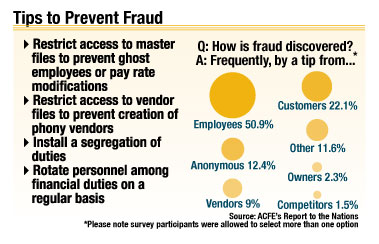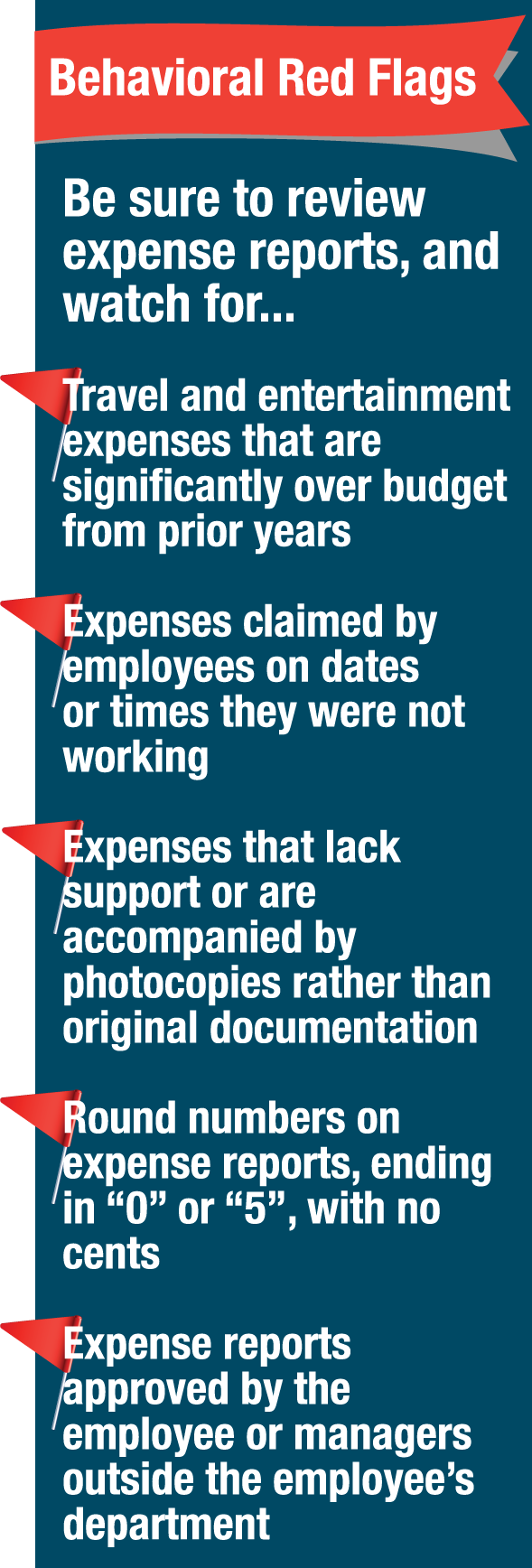
Even your most trusted employee could be tempted to commit fraud under the right circumstances. Make sure you know how to prevent that from happening.
We’ve written a lot about the fact that fraud happens in small businesses. Often times people think, “it could never happen to me”, but it does and recovering the money is no easy task.
According to the ACFE’s Report to the Nation, more than 3/4s of the frauds reported in their study were committed by employees who worked in one of the following six departments: accounting, operations, sales, executive/upper management, customer service, or purchasing. In 2012, employees were found to be the fraudsters 43% of the time, managers 34.3%, owners/executives 18.5%, and others 4.2%.
Ensuring that you have a system of checks and balances between departments and between position levels can help deter fraud. Just because someone is your most trusted employee doesn’t mean they couldn’t or wouldn’t commit fraud. According to the report, fraud by employees resulted in a median loss of $50,000; managers, $150,000; owners/executives, $373,000; and others, $86,000.
And remember, there could be more than one employee involved in the scheme. The study found that in 2012, 32.9% of US cases involved two or more perpetrators, which resulted in median losses of $175,000. Try to segregate duties as much as possible or rotate job duties to try to deter fraud schemes.
To learn more about ways to prevent fraud in your business contact Kit Powell, Certified Fraud Examiner.

Kit Powell
Certified Fraud Examiner
231.924.8035
kitp@hscompanies.com
 Kit Powell
Kit Powell


 Kit Powell
Kit Powell


 Kit Powell
Kit Powell
 If you are concerned that fraud may be occurring in your place of business, a good first place to check is in the area of employee expense reimbursement. Employees that state false information on their expense reports are likely to be committing some other type of fraud. There are four types of expense reimbursement fraud, which are: mischaracterized expenses, overstated expenses, fictitious expenses, and multiple reimbursements.
If you are concerned that fraud may be occurring in your place of business, a good first place to check is in the area of employee expense reimbursement. Employees that state false information on their expense reports are likely to be committing some other type of fraud. There are four types of expense reimbursement fraud, which are: mischaracterized expenses, overstated expenses, fictitious expenses, and multiple reimbursements. Kit Powell
Kit Powell
 Kit Powell
Kit Powell

